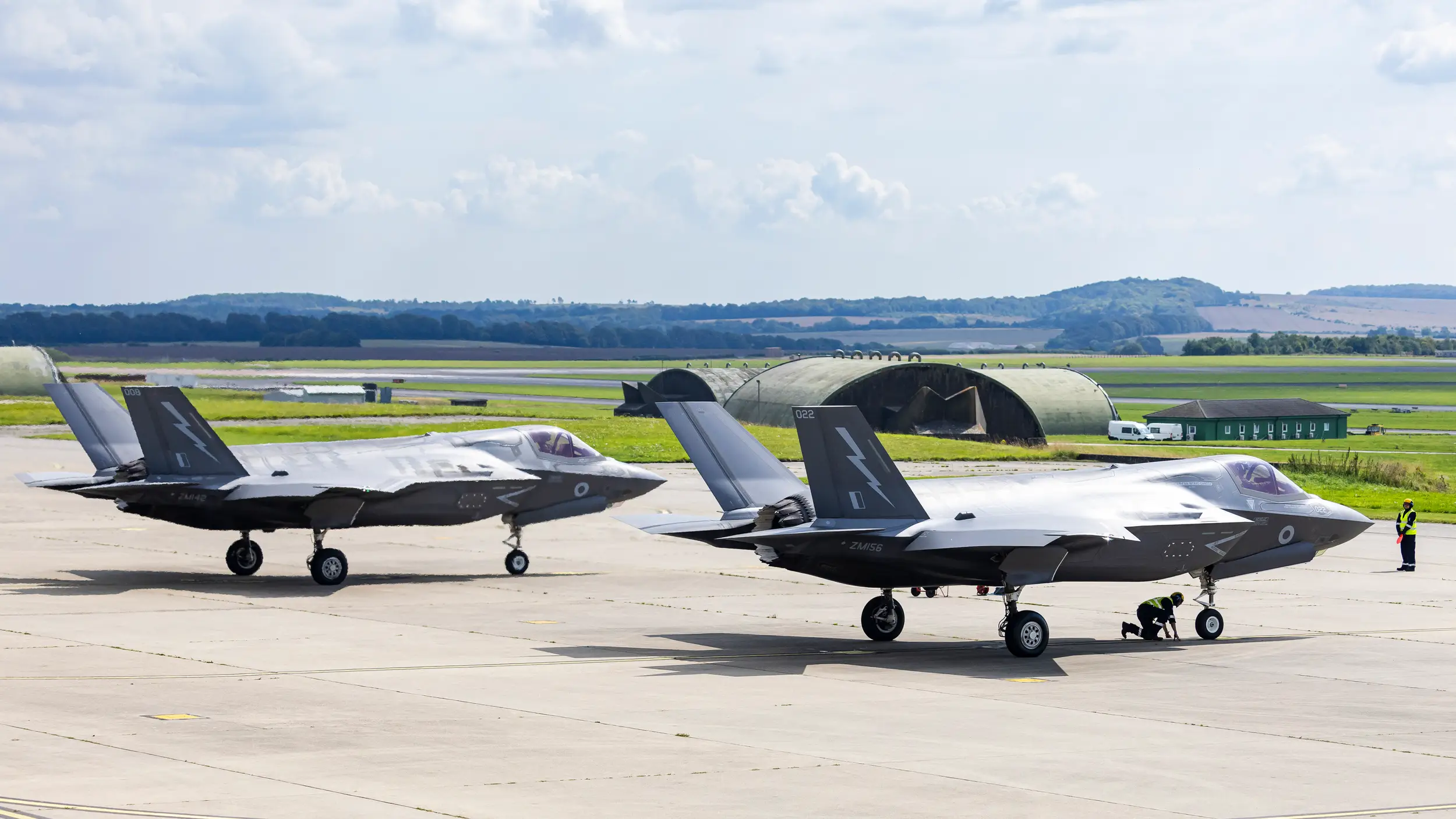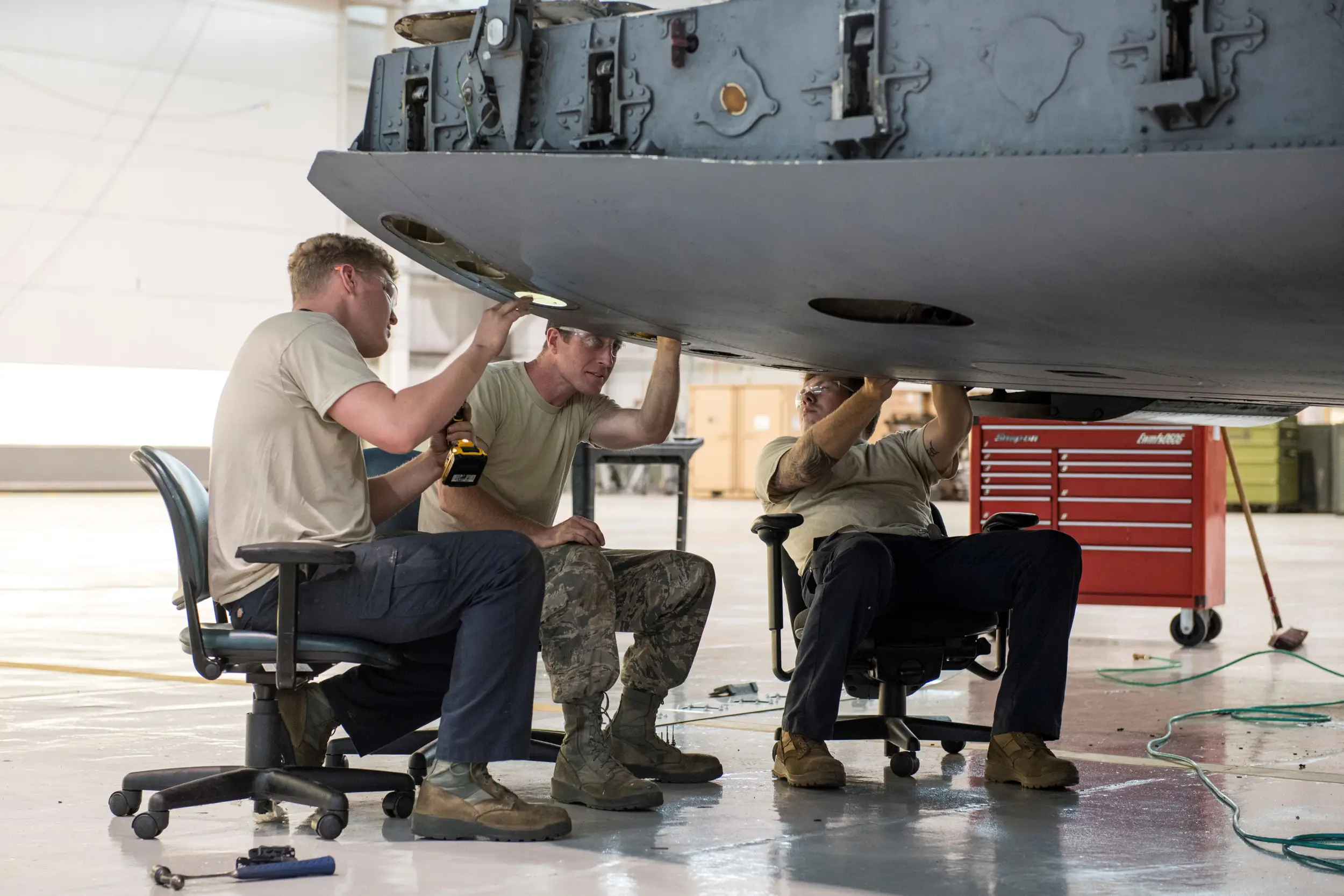READINESS REIMAGINED > SUSTAINMENT AND SUPPORT IN AN UNPREDICTABLE WORLD
studio | READINESS REIMAGINED | CHAPTER 2
In response to diverse and escalating threats, European militaries are increasingly focusing on resilience and readiness. A renewed emphasis on industry partnerships, logistics and supply chain management advancements, and new sustainment strategies are all crucial for adapting to a new era of conflict.
NATO forces adapt to the modern threat landscape by practicing dispersed operations in austere environments (Royal Air Force image)
For European militaries, the geopolitical landscape poses threats that have not been seen for decades, from a major continental war to the pitfalls of new technologies. As military commanders confront such challenges, force readiness has rapidly grown in importance.
Speaking at the recent DSEI exhibition in London, Rear Admiral Andrew Kyte, the UK’s Chief of Defence Logistics and Support, pointed to lessons from Ukraine, notably the need for resilience.
The war has become almost a ‘battle of who can be the most resilient … who has the most resilient supply chains, who has the most resilient industrial base, who has the most resilient people. And you have to be prepared to ramp up and come down again. And you can only do that if you have that inbuilt resilience’.
This point is not lost on politicians and military leaders across Europe. In October, the European Union conducted its first live military exercise with 2,800 troops from various countries in a significant move to boost the EU’s crisis response capabilities and military readiness.
A C-17 Globemaster prepares for Exercise Nordic Response 24 to test support facilities and mission readiness in extreme cold weather environments (Royal Air Force image)
EU Initiatives and Investments in Military Mobility
Other EU initiatives, including the Action Plan on Military Mobility and significant infrastructure investments, aim to enhance military mobility and operational energy security across Europe.
Partnerships with industry are vital to enhance resilience in sustainment and readiness, notably at a time of rapidly advancing technologies.
A robust sustainment plan is particularly crucial in the context of a new era of Great Power competition, the first such period since the end of the Cold War, which places demands on logistics and sustainment unlike any seen in decades.
'A comprehensive sustainment plan is essential'
This is a key focus for Collins Aerospace, an RTX business, which provides its customer base with service centres and asset pools around the globe, including its European partners. Close partnership with governments is crucial to overcome the growing threats presented by a rapidly evolving geopolitical landscape.
How does Collins Aerospace work with its customers to meet their sustainment demands? The company adopts a variety of analytical and technical approaches to provide cutting-edge sustainment support, said Steve Griffin, the company’s Director of Integrated Product Support.
‘Understanding the unique needs of different customers, especially those in defence, is crucial. Their primary concern often revolves around readiness and the ability to complete the mission. To achieve this, a comprehensive sustainment plan is essential,’ Griffin explained.
‘Such a plan ensures that equipment remains operational, either by maintaining parts in working condition or by proactively addressing potential failures. Ultimately, the effectiveness of any product in fulfilling its intended purpose hinges on the robustness of its sustainment strategy.’
Resilience: The Key to Overcoming New Challenges
In its contracts, Collins Aerospace offers different tiers of support, depending on customer needs, ranging from identifying problems to making recommendations and addressing obsolescence, for example, through replacement parts or modifying products altogether.
This includes Diminishing Manufacturing Sources and Material Shortages (DMSMS) analysis. ‘We proactively manage thousands of parts through DMSMS to resolve supply chain issues before they become disruptive,’ Griffin said.
The company can also provide root cause corrective action analysis of failure trends, Griffin said.
‘We’ll do an analysis of what’s causing the problem, then go to the root cause of how to correct it from a product update perspective.’
Collins Aerospace strives to identify failure trends early to provide a resolution that avoids aircraft on the ground (AOG) and maximises readiness.
F-35s take part in Exercise Agile Pirate to test the resilience of operational, engineering and logistical support by rapidly relocating forces without notice (Royal Air Force image)
The other side of sustainment is resilience, David Shouesmith, Executive Advisor at Universal Defence and Security Solutions (UDSS), noted. ‘You see a lot of consciousness [now] about the need to be resilient, the need to have robust sustainment in place, and a willingness to invest in that now.’
Resilience is key. It is the capability to prepare for disruption, said Caroline Field, Partner in National Resilience at PA Consulting, also speaking at DSEI. There is a need to adapt promptly and to thrive in a changing environment.
‘I like to think about resilience not just as a defensive measure, but very much a strategic enabler,’ she said, which must be considered in supply chains.
Providers such as Collins Aerospace are vital in supporting logistics, sustainment and readiness.
‘Our work can improve military performance and the ability of European nations and their allies to overcome threats by utilising our service engineer (SvE) to reduce removals/ returns. Our logistics and sustainment solutions help identify trends, helping expedite resolution along with minimising supply chain disruptions,’ Griffin added.
Addressing parts obsolescence is key to a robust sustainment strategy, reducing AOG and maintaining readiness (Royal Air Force image)
Tackling the Challenges of Obsolescence and Aging Systems
For example, Michael Nelson, Collins Aerospace’s Associate Director for Military Avionics Service Operations (including their Heidelberg Service Center), said the company focuses on a range of areas in which it can reduce turnaround time for customers, such as how it staffs its equipment capacity and addresses challenges around parts obsolescence as systems age.
‘Parts obsolescence and ageing systems are going to impede your turnaround time because if the equipment goes down, we might have to wait six months to a year to get the parts to be able to make the test equipment work so we can actually fix the unit,’ he explained.
Nelson noted that the solution is to redesign or move to a new product offering. However, redesign is sometimes not an option due to the age of the equipment.
In these cases, Collins Aerospace works with its customers to determine the most cost-effective and operationally beneficial solution, from upgrading parts to replacing them with new systems.
‘We strive to support our customers as long as needed to ensure the warfighter has what they need to complete their mission,’ Nelson said.
At the most basic level, the simple reality in a world of evolving threats is that ‘sustainment never stops’, noted Andrew Ormsby, Associate Director for Service Engineering for Military Avionics Services with Collins Aerospace.
‘It’s critical to ensure that the customer, their requirements, and the mission are there and ready to perform.’



